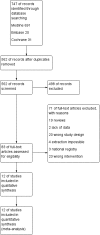Minimally invasive versus open pancreatoduodenectomy-systematic review and meta-analysis
- PMID: 28488004
- PMCID: PMC5506213
- DOI: 10.1007/s00423-017-1583-8
Minimally invasive versus open pancreatoduodenectomy-systematic review and meta-analysis
Abstract
Purpose: The purpose of this systematic review was to compare minimally invasive pancreatoduodenectomy (MIPD) versus open pancreatoduodenectomy (OPD) by using meta-analytical techniques.
Methodology: Medline, Embase, and Cochrane Library were searched for eligible studies. Data from included studies were extracted for the following outcomes: operative time, overall morbidity, pancreatic fistula, delayed gastric emptying, blood loss, postoperative hemorrhage, yield of harvested lymph nodes, R1 rate, length of hospital stay, and readmissions. Random and fix effect meta-analyses were undertaken.
Results: Initial reference search yielded 747 articles. Thorough evaluation resulted in 12 papers, which were analyzed. The total number of patients was 2186 (705 in MIPD group and 1481 in OPD). Although there were no differences in overall morbidity between groups, we noticed reduced blood loss, delayed gastric emptying, and length of hospital stay in favor of MIPD. In contrary, meta-analysis of operative time revealed significant differences in favor of open procedures. Remaining parameters did not differ among groups.
Conclusion: Our review suggests that although MIPD takes longer, it may be associated with reduced blood loss, shortened LOS, and comparable rate of perioperative complications. Due to heterogeneity of included studies and differences in baseline characteristics between analyzed groups, the analysis of short-term oncological outcomes does not allow drawing unequivocal conclusions.
Keywords: Laparoscopy; Pancreatic cancer; Pancreatoduodenectomy; Robotic surgery; Whipple procedure.
Conflict of interest statement
Conflict of interest
The authors declare that they have no conflict of interest.
Ethical approval
This article does not contain any studies with human participants performed by any of the authors.
Figures









Similar articles
-
Minimally invasive pancreaticoduodenectomy for periampullary disease: a comprehensive review of literature and meta-analysis of outcomes compared with open surgery.BMC Gastroenterol. 2017 Nov 23;17(1):120. doi: 10.1186/s12876-017-0691-9. BMC Gastroenterol. 2017. PMID: 29169337 Free PMC article.
-
The clinical implication of minimally invasive versus open pancreatoduodenectomy for non-pancreatic periampullary cancer: a systematic review and individual patient data meta-analysis.Langenbecks Arch Surg. 2023 Aug 15;408(1):311. doi: 10.1007/s00423-023-03047-4. Langenbecks Arch Surg. 2023. PMID: 37581763 Free PMC article.
-
Minimally invasive versus open pancreatoduodenectomy for pancreatic ductal adenocarcinoma: Individual patient data meta-analysis of randomized trials.Eur J Surg Oncol. 2023 Aug;49(8):1351-1361. doi: 10.1016/j.ejso.2023.03.227. Epub 2023 Apr 7. Eur J Surg Oncol. 2023. PMID: 37076411
-
Minimally invasive surgical approach versus open procedure for pancreaticoduodenectomy: A systematic review and meta-analysis.Medicine (Baltimore). 2017 Dec;96(50):e8619. doi: 10.1097/MD.0000000000008619. Medicine (Baltimore). 2017. PMID: 29390259 Free PMC article.
-
Pancreaticojejunostomy versus pancreaticogastrostomy reconstruction for the prevention of postoperative pancreatic fistula following pancreaticoduodenectomy.Cochrane Database Syst Rev. 2017 Sep 12;9(9):CD012257. doi: 10.1002/14651858.CD012257.pub2. Cochrane Database Syst Rev. 2017. PMID: 28898386 Free PMC article.
Cited by
-
Overcoming Drug Resistance by Taking Advantage of Physical Principles: Pressurized Intraperitoneal Aerosol Chemotherapy (PIPAC).Cancers (Basel). 2019 Dec 20;12(1):34. doi: 10.3390/cancers12010034. Cancers (Basel). 2019. PMID: 31877647 Free PMC article. Review.
-
Meta-analysis of short- and long-term outcomes after pure laparoscopic versus open liver surgery in hepatocellular carcinoma patients.Surg Endosc. 2019 May;33(5):1491-1507. doi: 10.1007/s00464-018-6431-6. Epub 2018 Sep 10. Surg Endosc. 2019. PMID: 30203210 Free PMC article.
-
The experience of the minimally invasive (MI) fellowship-trained (FT) hepatic-pancreatic and biliary (HPB) surgeon: could the outcome of MI pancreatoduodenectomy for peri-ampullary tumors be better than open?Surg Endosc. 2021 Sep;35(9):5256-5267. doi: 10.1007/s00464-020-08118-x. Epub 2020 Nov 4. Surg Endosc. 2021. PMID: 33146810
-
Laparoscopic Pancreaticoduodenectomy in Elderly Patients: Systematic Review and Meta-Analysis.Front Surg. 2022 Mar 4;9:807940. doi: 10.3389/fsurg.2022.807940. eCollection 2022. Front Surg. 2022. PMID: 35310445 Free PMC article.
-
Comparison of Perioperative and Oncological Outcomes of Hybrid and Totally Laparoscopic Pancreatoduodenectomy.Med Sci Monit. 2020 Apr 26;26:e924190. doi: 10.12659/MSM.924190. Med Sci Monit. 2020. PMID: 32335577 Free PMC article.
References
Publication types
MeSH terms
LinkOut - more resources
Full Text Sources
Other Literature Sources

